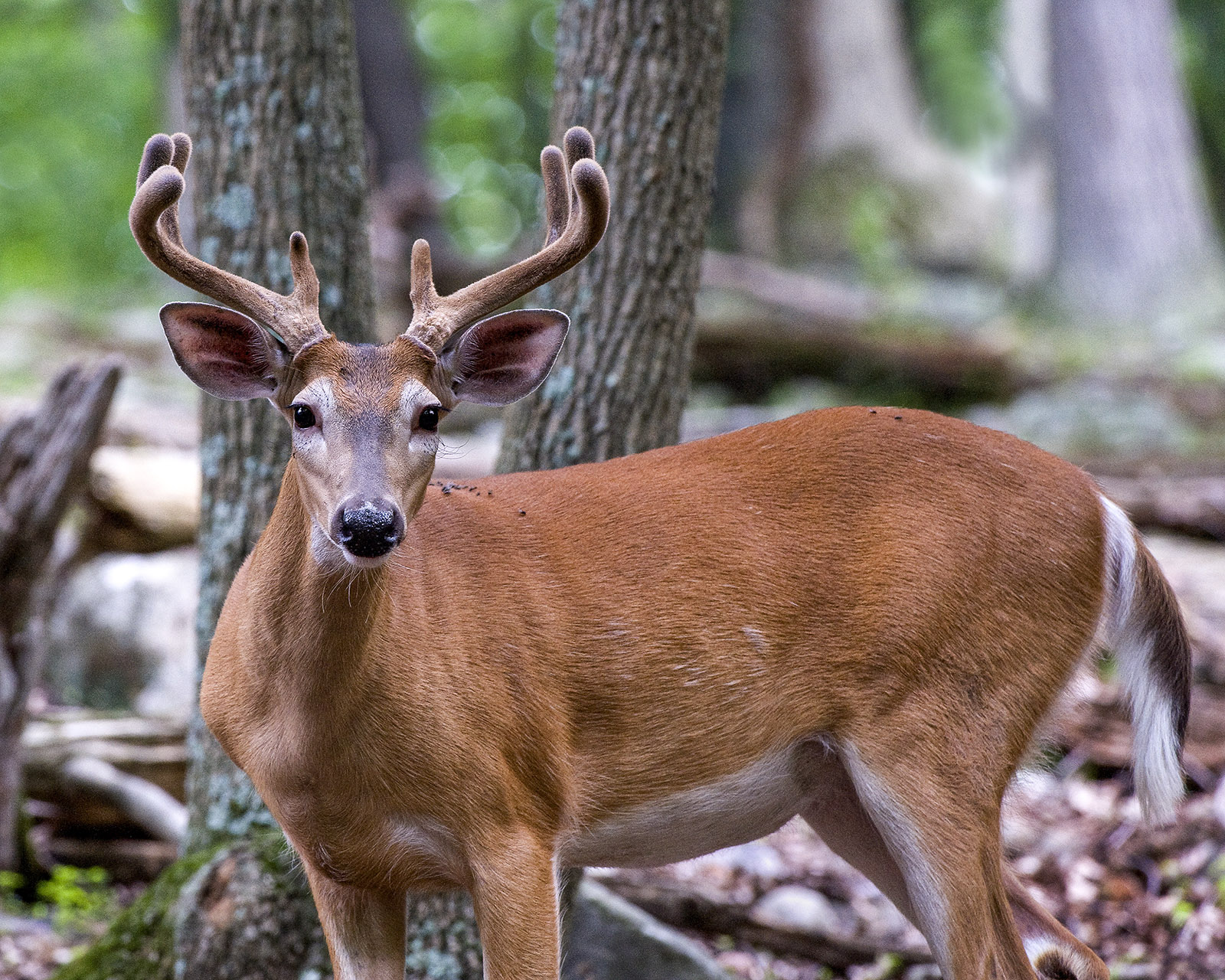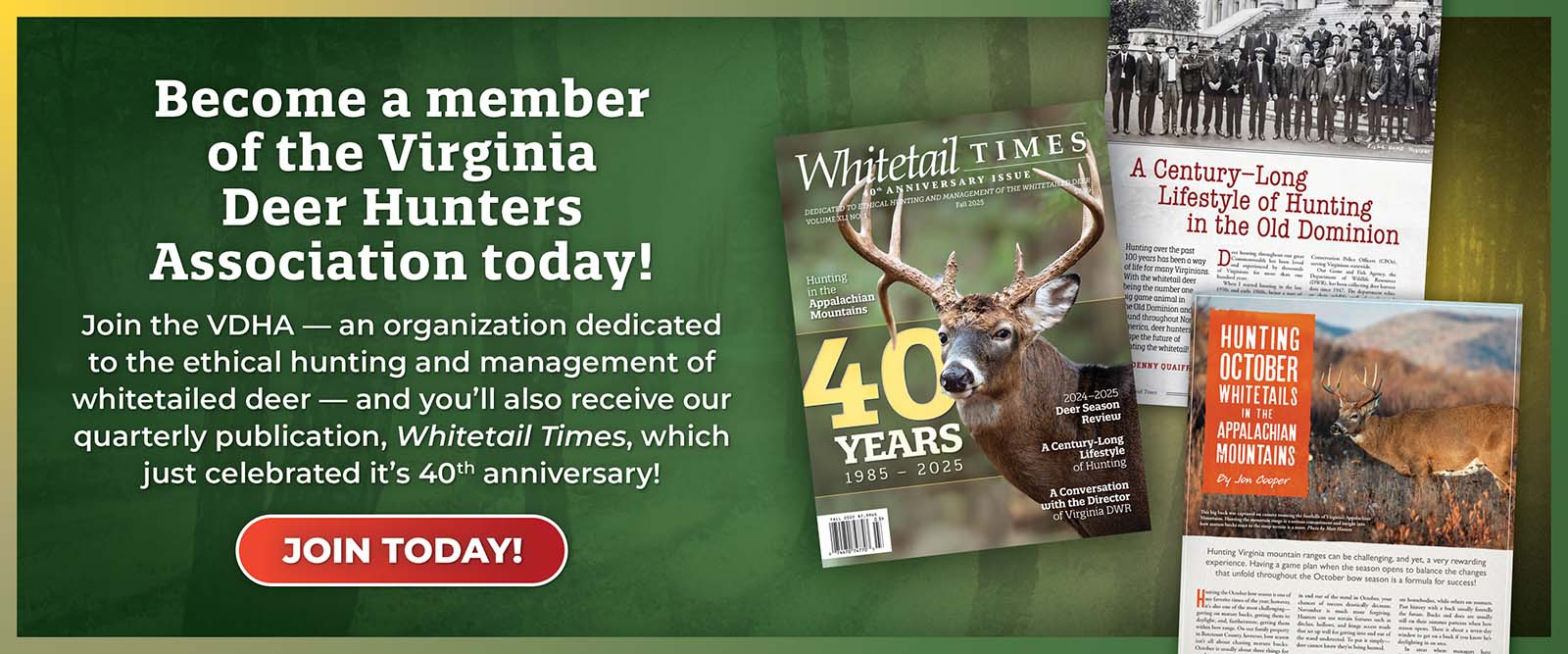By Dr. Leonard Lee Rue III for Whitetail Times
Photos by Dr. Leonard Lee Rue III
I realize that most of you won’t remember the time that I’m going to be telling you about, you probably weren’t even born then.
Back in 1962, a young singer by the name of Kitty Kallen, recorded a song that was filled with excellent advice for all of you no matter your age. The song was “Little Things Mean a Lot,” and was about how thoughtfulness is the key to any good relationship. And that may be the most valuable knowledge you get out of this column. Now, this column is not about thoughtfulness, but the title just popped up in my mind because it describes perfectly what I want to explain.
Glancing up on an open woodland slope and seeing deer bedded down where the sun had exposed brown leaves, rather than on the adjoining part of the slope that still had snow on it. A few surrounding trees caught a lot of the snow and held it aloft on their branches, which allowed the tips of some of the fallen leaves to project above the snow. The area around the tree trunks had melted because the dark trunks had absorbed and given off heat, creating their own microclimate. The exposed brown vegetation absorbed the warmth and was melting an ever-enlarging circle in the snow, radiating outward from the trees. We were fortunate not to get any of the really deep snow that blanketed most of the northeast section of the country over the Christmas holiday. We did get between 2-4 inches and did have bitterly cold weather with the wind chill factor being about 15 degrees below zero. For many types of wildlife, just one or two degrees warmer may mean the difference between life and death in a bitter winter where replacement calories cannot be gotten because of lack of food.
The slope was south-facing, which meant it got more of the sun’s rays no matter what the temperature, so it was warmer than the general area. The slope was open, so that it got more direct sunlight. Snow doesn’t melt very fast in the woodlands because the trees are casting a shadow on some of the snow as the sun is traveling about a 140 degree arc in the sky over a 10-hour span. The shadows move constantly, and really quite rapidly, because the sun appears to move; after all the earth is spinning at about 1000 miles per hour. That means the sun can’t get the snow warmed up enough to melt because the shadows are cooling it off faster than the sun can warm it.
The wind was coming from the northwest, a Canadian clipper, blowing about 30 miles or more per hour. That caused a chill factor of between 12 and 15 degrees. As the wind was coming from behind the slope, the deer were not getting the full effects of it. Deer avoid hollows in cold weather because cold settles there and the temperature difference depends upon the height and steepness of the slope. One slope in open woodland that I measured is about 600 feet long, about 200 foot in elevation, with about a 20 degree rise to it. The difference in temperature between the top of the slope and the hollow below, on one of those cold days, thermometer measured, was almost 5 degrees.
Plus the fact that the top of the slope got the sun ray’s a lot earlier in the morning than did the hollow added to the temperature difference. These differences I got with instruments while the deer got the same information instinctively. They take advantage of every degree of temperature they can. To minimize heat loss, they will not move at night, but will wait till mid-morning to seek what little food is available.
On the coldest of days, if there is any sun, there will be some heat absorption. It’s why the deer shed their light-reflective red summer coat and acquire a dark brown or dark gray winter coat. In the last snow, I did not shovel a path across my lower field to get to my pond, where I have put out a half bucket of corn for the ducks for the past 39 years. Instead, I merely shuffled my feet, kicking up the underlying leaves, which attracted the sun’s warmth and melted the trail in three or four days.
A deer’s body temperature varies between 102 and 103 degrees Fahrenheit. Its feces exit the body at the same temperature and cool off rapidly, but do melt some of the snow that they fall on before they cool off. If the trail is heavily used, the feces accumulate, being dark, they also absorb heat from the sun and the trail will be melted out long before the surrounding landscape.
By the same token, the deer are experts at minimizing exposure to excess heat in the summer. They will bed in the darkest part of the forest in their areas. The transpiration of moisture given off by the leaves of the trees, and the shade they provide, will have a dark forest 10 to 15 degrees cooler than open areas. If possible they will bed by a fast-moving stream because the movement of the water will dramatically lower the surrounding temperature. They often feed in ponds and lakes to get the mineral rich vegetation, but also to cool off and have less surface exposed that can be bitten by insects.

The velvet antlers and bright red coat are a very typical sighting when glassing open fields during the summer months. Deer are experts at minimizing exposure to excess heat in the summer during the hot daylight hours. They will bed in the darkest part of the forest to limit their exposure and move from these bedding areas to feed at sunset
They shift their feeding times to minimize exposure to the sun not coming out of the woods till just before the sun is setting and then feeding only in the long shadows. They usually bed, at night, in the fields in which they are feeding. The condensation of the dew on the vegetation will lower the temperature considerably. They finish their morning feeding early and bed up on the northern side of any hill or ridge in the area. Keeping all activity to a minimum is perhaps the most efficient reduction of heat possible. If they are not burning calories, and please note the use of the word burning, they are not creating heat.
As I have said many of the things discussed herein are little steps taken by the deer but “Little Things Mean a Lot.”
Dr. Leonard Lee Rue III continued his regular Whitetail Times column until his passing in November 2022. His wife Uschi granted permission to publish his remaining lifework.
©Virginia Deer Hunters Association. For attribution information and reprint rights, contact Denny Quaiff, Executive Director, VDHA.



